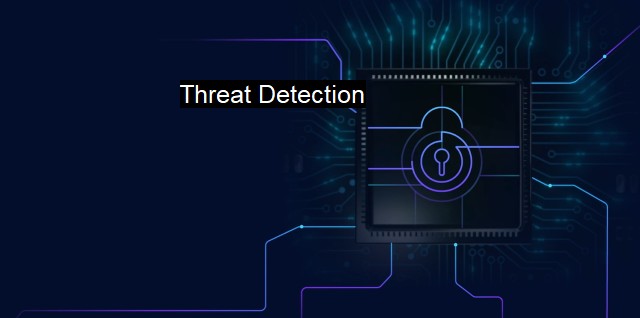What is Threat Detection?
Threat Detection in the Current Digital Landscape: Importance, Tools and Best Practices for Cybersecurity
Threat detection, in the sphere of cybersecurity and antivirus, is an essential process designed to identify and mitigate potential breaches in information systems. it is the process of identifying malicious elements within a virtual network, system, or hardware which may cause harm or disruptions most of which are typically related to hackers, malwares, and viruses.Cybersecurity threat detection operates predominantly through the protection of an organization's information and infrastructure systems. It predictively scrubs, scans, monitors, and seizes malicious data to maintain system functionality. This detection system's primary purpose is to prevent unauthorized access, maintain privacy, protect sensitive or valuable data, and ensure system integrity overall.
Fundamentally, threat detection involves critical strategies and technologies aimed at recognizing the possible dangers that a network or system may encounter. it includes the use of artificial intelligence to systematically prescan the internet for potential threats and to search for likely damage, intelligent firewalls designed to naturally isolate and combat harmful files, and machine learning-based analytics implemented to predict the behaviours of a network intruder.
One of the primary elements of threat detection technology is antivirus software, which works continuously to identify unwelcome or potentially harmful data files. These tools are designed to run comprehensive searches throughout an email system, applications, files, and other functional segments of a network. Per their scan, they assess the data retrieved against updated databases of known virus types. Whenever the antivirus software detects a matching virus or an element with similar characteristics, it removes it from the network or system or puts it in quarantine to minimize the potential damage report.
In terms of strategies for threat detection, various types rank high amongst cybersecurity experts and IT professionals. That includes the deployment of Endpoint Protection Platforms (EPP) and the usage of Endpoint Detection and Response (EDR) solutions. These strategies target each device on a network (computers, mobile devices, servers, etc.) and serve as an entry point from external attackers. In general, by establishing sufficient visibility on each endpoint, these techniques contribute to detecting anomalies and threats in real-time to ensure quick actions are taken before the threat expands.
Threat detection also incorporates the use of Security Information and Event Management (SIEM) systems to track and study behavioural patterns of network traffic to identify any elusive threats and analyze potential vulnerabilities in the network.
As the cybersecurity terrain expands and attackers find new ways to manipulate systems, Deception Technology provides a forward-leaning approach to threat detection. By imitating actual informational assets, this technology baits cybercriminals into attacks aimed at non-critical decoy structures while concealing actual assets untouched, providing insight into manipulative patterns and escalating threat management measures.
Artificial Intelligence-specific threat-detection instruments are now leveraging on machine learning to devise smart systems, rooted in self-learning and adaptability. Unsupervised machine learning singularly eradicates the limitations seen in plainly programmed antivirus systems, creating a dynamic environment of constant protection and surveillance.
Secure Web Gateways functions as checkpoint inspectors between an organisation’s internal network and the wider internet to detect informed threats in incoming, web-bound data.
Cybersecurity threat detection instigates deliberate and systematic efforts in protecting our much-adored tech world, personal and corporate data take center stage. Given the upsurge in the sophistication level of digital threats, we have to constantly evolve our threat detection processes. Thus, investments in threat detection should never be overlooked in any organisation while thinking about cybersecurity strategy, updates or otherwise building a natively secure environment from the ground up. The potential magnitude of losses that can occur as a result of an invasive attack is an accurate echo of an organisation's preparedness in combating these threats through proactive detection and strategic handling.

Threat Detection FAQs
What is threat detection in cybersecurity?
Threat detection refers to the process of identifying indicators that suggest the presence of malicious activity or a security breach within a computer system. It is a critical aspect of cybersecurity, and antivirus software often incorporates sophisticated threat detection capabilities.How does antivirus software detect threats?
Antivirus software uses a combination of signature-based detection, behavior-based detection, and heuristics to identify threats. Signature-based detection involves comparing files and programs on a computer to a database of known malware signatures. Behavior-based detection involves analyzing the behavior of programs and identifying patterns that suggest malicious activity. Heuristics involves using algorithms and machine learning techniques to identify previously unknown threats based on their behavior.What are the common types of threats detected by antivirus software?
Antivirus software can detect a wide range of threats, including viruses, worms, trojans, adware, spyware, rootkits, and ransomware. Some antivirus software also has the capability to detect and prevent phishing attacks and other types of social engineering attacks.How effective is threat detection in preventing cyberattacks?
Threat detection is an essential component of cybersecurity, but it is not foolproof. New threats and attacks are constantly emerging, and even the most advanced antivirus software may not be able to detect them all. That's why it's important to use multiple layers of security, including antivirus software, firewalls, and intrusion detection systems, to protect your computer and network from cyberattacks.| | A | | | B | | | C | | | D | | | E | | | F | | | G | | | H | | | I | | | J | | | K | | | L | | | M | |
| | N | | | O | | | P | | | Q | | | R | | | S | | | T | | | U | | | V | | | W | | | X | | | Y | | | Z | |
| | 1 | | | 2 | | | 3 | | | 4 | | | 7 | | | 8 | | |||||||